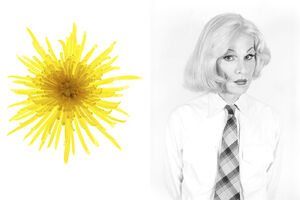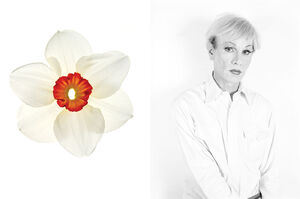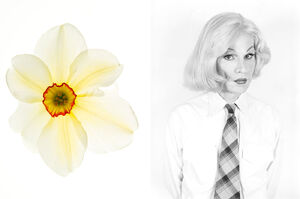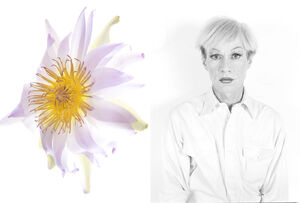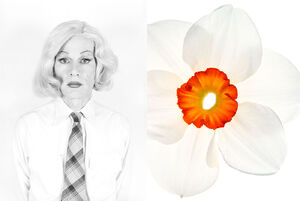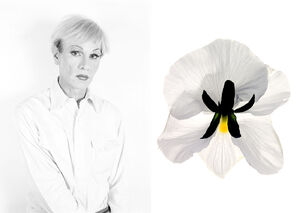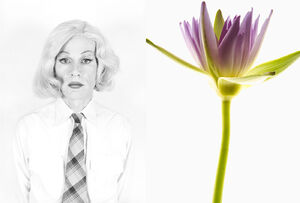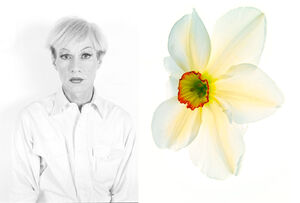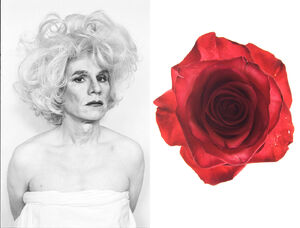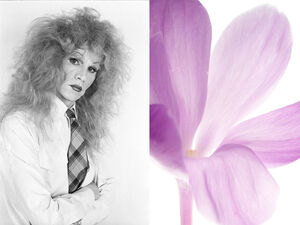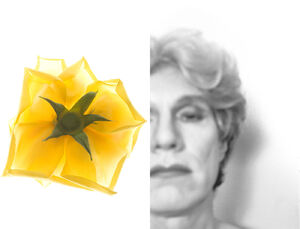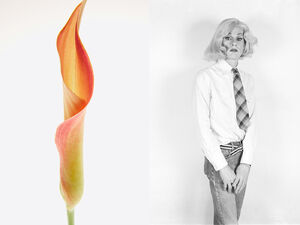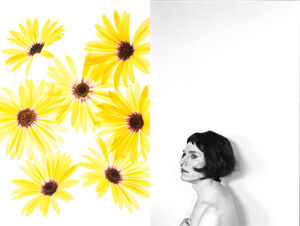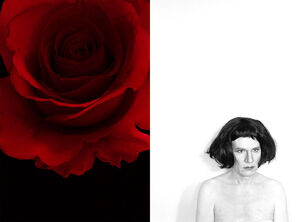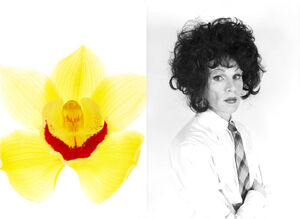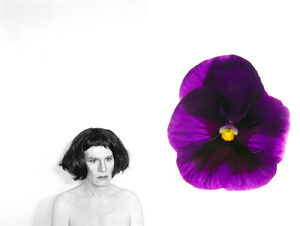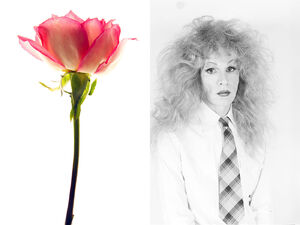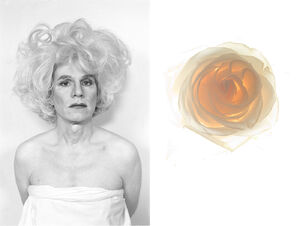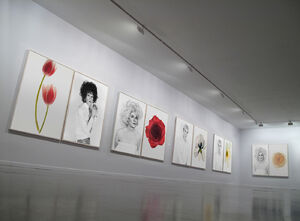Photos
ANDY DANDY (2007)
It's a story of Christopher Makos collaborating with two generations. There is today's Makos-Solberg collaboration on one end, and Makos's decade-long collaboration with Andy Warhol. In both collaborations with Solberg and Warhol, Makos was the collaborator, the muse, and the teacher. The "Andy Dandy" series is the opus of this art history 'family-tree'. A living breathing manifestation of collaboration through generations. Andy Dandy is a portfolio of 20 archival giclée prints. All are diptychs that combine images from Makos "Altered Image" portraits of Andy Warhol with flower images from Solberg's "Bloom" series. The images of Andy Warhol in "Andy Dandy" are the result of a 1981 collaboration between Makos and Warhol called "Altered Image", through which the photographer and his subject used unexpected combinations of simple elements to explore Identity, as did Man Ray (Makos' mentor) and Duchamp decades earlier. Warhol slightly altered his appearance with make-up and a wig, otherwise remaining in his street clothes. It was all the outward change Warhol felt he needed. Andy said, "I'm not trying to look beautiful like Elizabeth Taylor, I'm trying to show what it feels like to be beautiful like Elizabeth Taylor." Solberg's photographs of single flowers, exquisitely composed and lit, pare the images down to the intensity of color and form. Solberg undertook his study of flowers as an exercise in using light to reveal the elemental purity of a subject otherwise encumbered by overexposure and banality, resulting in sensitive portraits rather than still life images. Like the "Altered Image" photos, many of Solberg's flowers are isolated subjects against a white background. This common white ground in the ANDYDANDY diptychs brings the disparate images into balance. ANDYDANDY considers the rich association between Andy Warhol and flowers by creating a beautiful and intriguing dialogue between Makos' and Solberg's work. Andy wasn't the kind of dandy to wear a flower in his lapel, but as ANDYDANDY demonstrates, sometimes by just altering the image of one's work or oneself, a new beauty blooms.
